Table of Contents
- 1 Essential Elements Involved in Building a Pergola
- 2 Types of Pergolas for Sydney Homes
- 3 An Average Price Estimate
- 4 Hidden Costs: Permitting, Excavation, and Design Fees
- 5 Material Costs: Steel vs Timber Pergola
- 6 Different price ranges for pergola kits
- 7 Why the Construction Costs may Increase in 2024
- 8 Choosing the Best Time for Building a Pergola
- 9 Securing a Fair Quote: Contractor’s and Builder’s Quotes
- 10 Future of Pergolas: Design Trends and Associated Costs
- 11 Conclusion
- 12 Frequently Asked Questions
- 12.1 Q: What types of pergolas are typically more expensive to build?
- 12.2 Q: Are there additional costs to consider when thinking of installing a pergola?
- 12.3 Q: How can I estimate the average cost of my pergola project?
- 12.4 Q: Can I save money by building the pergola myself?
- 12.5 Q: How does the cost of a pergola in Sydney 2024 compare to 2023?
- 12.6 Q: Does the choice of roof for my pergola affect the cost?
- 12.7 Q: Can a pergola add value to my property in Sydney?
- 12.8 Q: What costs are involved if I want to build a deck as well as a pergola?
Building a pergola in Sydney, a city that beautifully marries outdoor living with urban flair, requires you to think about several factors. The cost of constructing a pergola here can differ greatly based on the materials you choose, the complexity of your design, and the going rates for labor. A pergola isn’t just a visual treat for your garden feature; it also demands a well-thought-out budget. We’ll guide you through the key elements that affect the price and help you plan financially for your outdoor addition in Sydney. With the current market trends in mind, this guide aims to arm you with the knowledge you need to make smart choices for your pergola build.
The cost of a pergola in Sydney can vary widely based on size, materials, and design. Prices can range from a few thousand dollars to tens of thousands somewhere between $3,000 and $6,000.
When planning your pergola, the type of material you decide on timber, metal, or something else, will largely dictate the cost. Design intricacies can also add to the expense, as more elaborate structures like cabanas require more time and skill to construct. And in Sydney, where the demand for skilled tradesperson can push up prices, labor will form a significant part of your budget.
Getting a few quotes can help you understand the range of prices you’re looking at. It’s wise to compare these quotes carefully, checking what’s included and what might be additional costs. Remember, the cheapest option isn’t always the best in terms of quality and longevity.
In summary, when you’re looking to add a pergola to your Sydney home, paying attention to materials, design, and labor will help you understand the investment needed. With solid planning and the right information, you’ll be set to add a stylish and functional outdoor structure to your space.
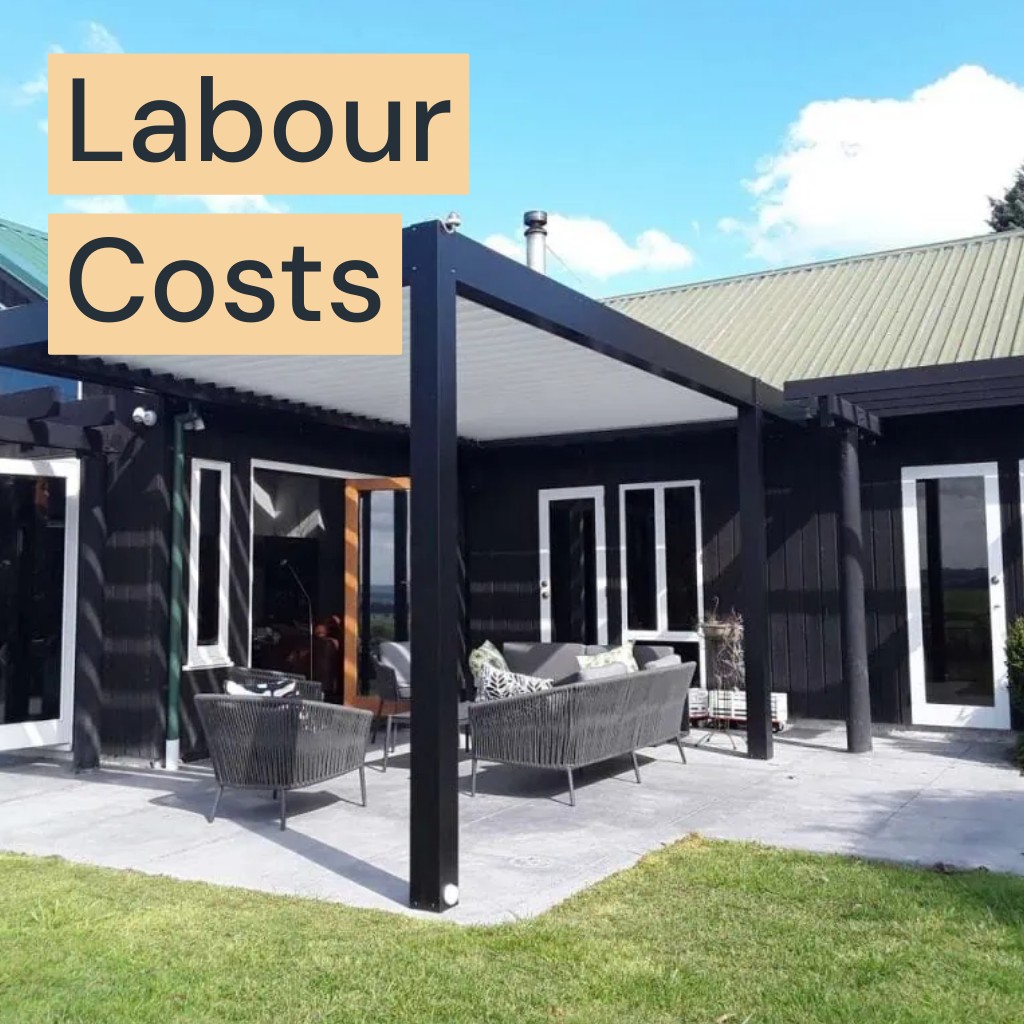
Essential Elements Involved in Building a Pergola
As an experts in pergola construction with over 15 years of experience, we can guide you through the key elements involved in building a quality pergola in Sydney.
The foundation is crucial, so you’ll need to budget for concrete and potential excavation to create a level, sturdy base. The structure itself will require carefully-planned carpentry using durable beams, rafters, and posts , we typically recommend natural wood or steel depending on the look you desire.
You’ll also want to consider complementary elements like roofing materials, outdoor furniture, garden furniture, decking underfoot, and thoughtful landscaping around the perimeter. These finishing touches aren’t structurally necessary but can elevate the final product visually and functionally.
Budget-wise, there are always tradeoffs to weigh. Doing portions yourself can save money upfront, but professionals with specialized expertise in carpentry, roofing, and other skills often guarantee sturdier builds. Their insight also helps optimize the design process and navigate critical steps like council approval in NSW.
We advise clients to solicit quotes from both builders and contractors early on to gauge overall costs. Quotes should cover projected expenses for materials, construction labor, design fees, building regulations approval, and required inspections. This allows you to make informed decisions about project scope and scheduling without costly surprises down the road.
With careful planning and partnerships with qualified pergola professionals like Pergolas Sydney Authority, you can create a customized backyard oasis perfect for entertaining or everyday relaxation. Please don’t hesitate to get in touch if you have any other questions!
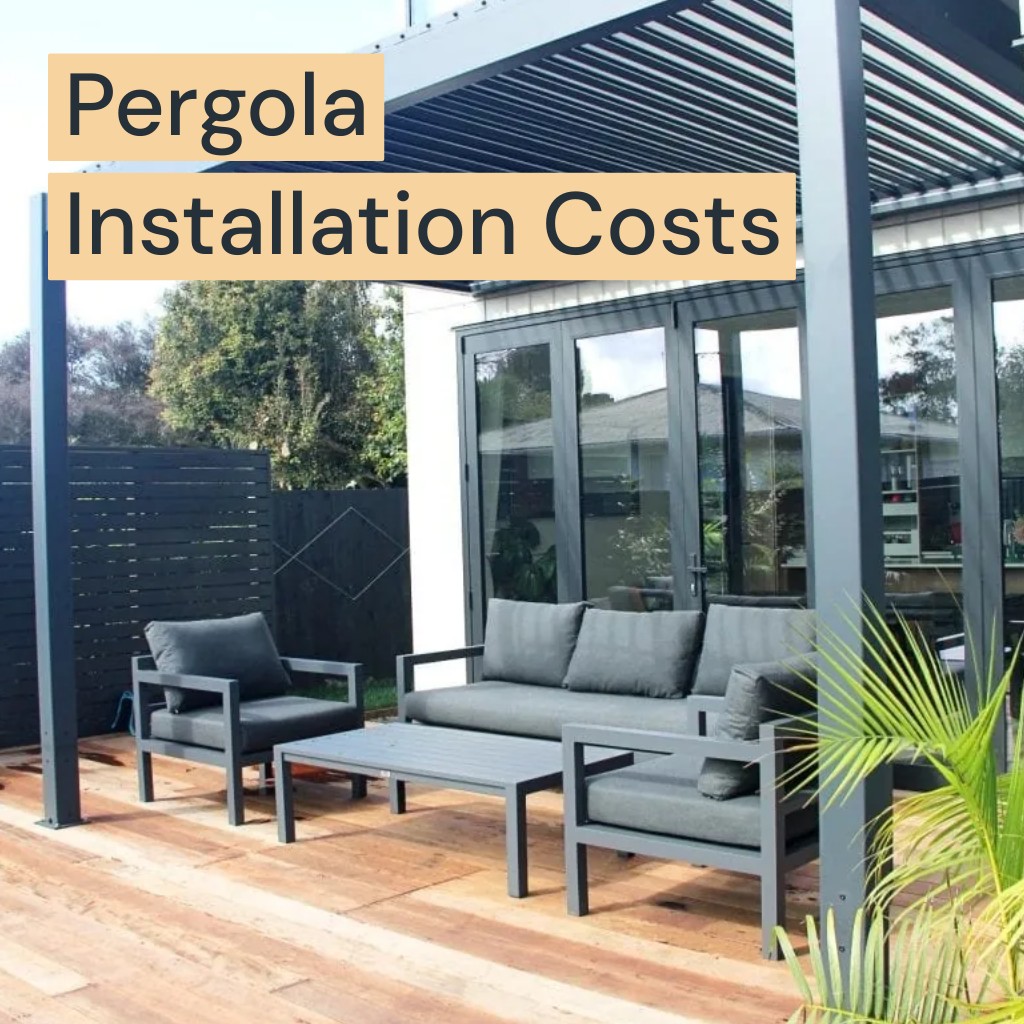
Types of Pergolas for Sydney Homes
When choosing a pergola for your Sydney home, consider materials like wood, metal, vinyl, brick or stone along with design elements such as retractable roofs, shades, waterproof covers, lighting, heating, ceiling fans, speakers, trellises and outdoor furnishings or kitchens. These factors along with your intended use – whether for entertaining, dining, relaxing by the pool or around a cozy fire pit – will determine the best pergola to complement your landscape.
Classic wooden pergolas have an enduring appeal but may require regular upkeep compared to aluminum, steel or vinyl. Metal and vinyl options provide strength and sleek modern styling. Brick and stone masonry pergolas seamlessly blend with traditional architecture.
If you want a pergola that feels part of the natural environment, choose vines like jasmine, grapes or wisteria to cascade over the overhead structure. But be sure to select plants that can thrive in Sydney’s climate.
Louvered pergolas give you control over sunlight and coverage. And flexible additions like retractable waterproof roofs, drop curtains, or heating and ceiling fans expand functionality for year-round outdoor living.

Carefully considering what design elements to incorporate will ensure your customized pergola not only suits your lifestyle but also stays within budget. And with proper installation and care, it will enhance your Sydney home for years to come.
Materials Used in a Pergola
When building a pergola, you have three main material options: wood, metal, and vinyl.
Wood brings a timeless, natural aesthetic that fits well in garden environments and can be treated to last longer, although it might need more upkeep. Many people choose wood for its traditional look.
Metal options like steel and aluminum are known for their strength and low maintenance. They stand up well against weather, which is useful in places like Sydney where the elements can be harsh. Aluminum is lighter and doesn’t rust easily, while steel is very strong but can rust if not properly treated.
Vinyl is a newer material that’s gaining popularity due to its durability and low maintenance. It doesn’t have the natural allure of wood, but it does have a neat, modern look and is available in various colors.
Each material has its own benefits, and the best choice depends on your personal preference, local climate, and how much time and effort you’re willing to invest in maintenance.
DIY Pergola vs Professional Pergola Builder: What’s the Cost
As you start building a pergola in Sydney, the costs will differ based on your choice to take on the project yourself or to employ a professional. Here are the main factors to consider that affect both your budget and your experience:
- Time Commitment: Tackling the project on your own can be time-consuming and may lead to stress and exhaustion.
- Expertise: If you lack the necessary skills, the project might become overwhelming, potentially ending in disappointment.
- Work Quality: Hiring a pro means you’re likely to get a well-built structure, giving you a sense of accomplishment when it’s finished.
- Added Value: A pergola made by an expert can increase your home’s value, which is reassuring and a smart financial move.
These are critical considerations as you choose between the satisfaction of a personal project and the reliability of expert craftsmanship.
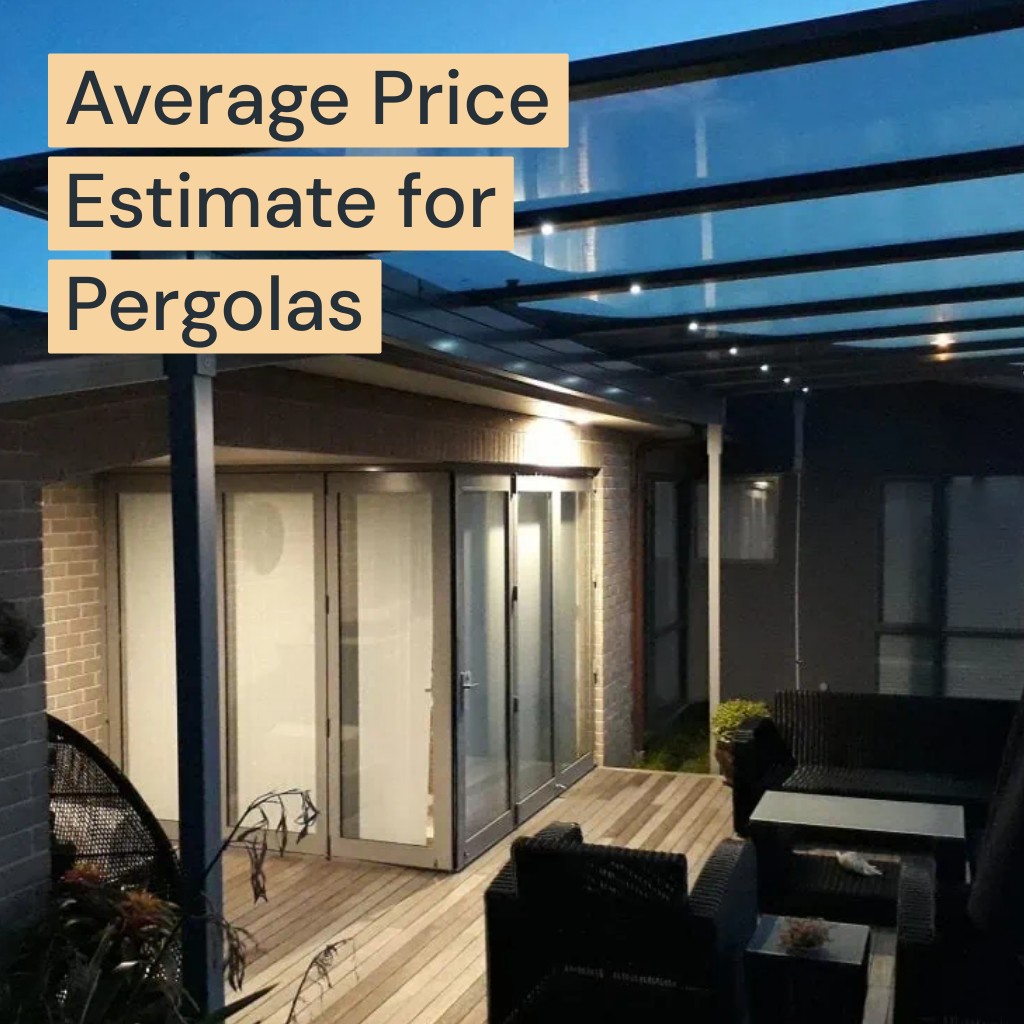
An Average Price Estimate
On average, the cost to build a pergola in Sydney ranges from AUD $4,000 to AUD $12,000. This variation is due to choices in materials, the size you’re aiming for, and the intricacy of the design. When considering the investment in a pergola, homeowners should also think about the benefits it brings to their living space:
- Social Gatherings: A pergola is a great addition for those who love to host, providing a stylish and comfortable setting for family and friends to come together.
- Personal Oasis: It’s a perfect spot to unwind in your own backyard, offering a quiet place to decompress after busy days.
- Visual Appeal: Installing a pergola can dramatically improve the look of your garden, turning a simple outdoor area into an inviting space.
- Property Value: A well-built pergola can do more than just provide immediate enjoyment; it can also make your home more attractive to potential buyers and increase its resale value.
Remember to reflect on how these structures can positively impact your lifestyle and not just focus on the initial price tag.
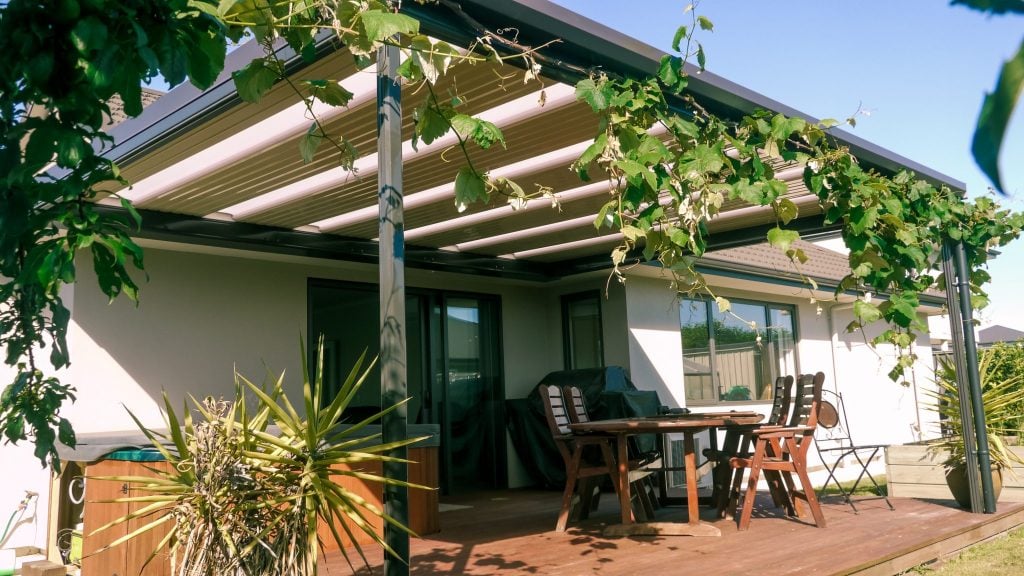
Cost Comparison
Here’s a rough guide to what you might expect to pay:
- Simple Wooden Pergolas: These start at about $2,500 and offer a classic look that complements many gardens.
- Metal Pergolas: Expect to spend somewhere between $3,000 and $6,000 for these, which are sturdy and require less upkeep.
- Bespoke Pergolas: For a design that’s tailored just for you, you could be looking at upwards of $10,000.
- Pergolas with Retractable Roofs: Prices for these begin at $5,000, giving you the flexibility to adjust to different weather conditions.
Keep in mind, the final price will depend on the pergola’s size, the intricacies of the design, and any additional features you might want.
Always remember to get a detailed quote that covers all your specific needs for the most accurate pricing.
Hidden Costs: Permitting, Excavation, and Design Fees
When planning to build a pergola in Sydney, you need to be aware of not just the obvious costs of materials and labor. There are other expenses to keep in mind:
- Permit Fees: Dealing with local council requirements might be complex. The cost of these permits differs depending on where you live and the details of your project.
- Excavation Costs: Preparing your site for construction might involve leveling the ground, which can add unexpected costs to your project.
- Design Fees: Hiring a professional for a custom design will make your pergola stand out, but it will also add to the total price.
- Unexpected Challenges: It’s wise to set aside some extra funds for any surprise difficulties that might come up, like unstable soil or construction delays due to bad weather. These can stretch your budget if you’re not prepared.
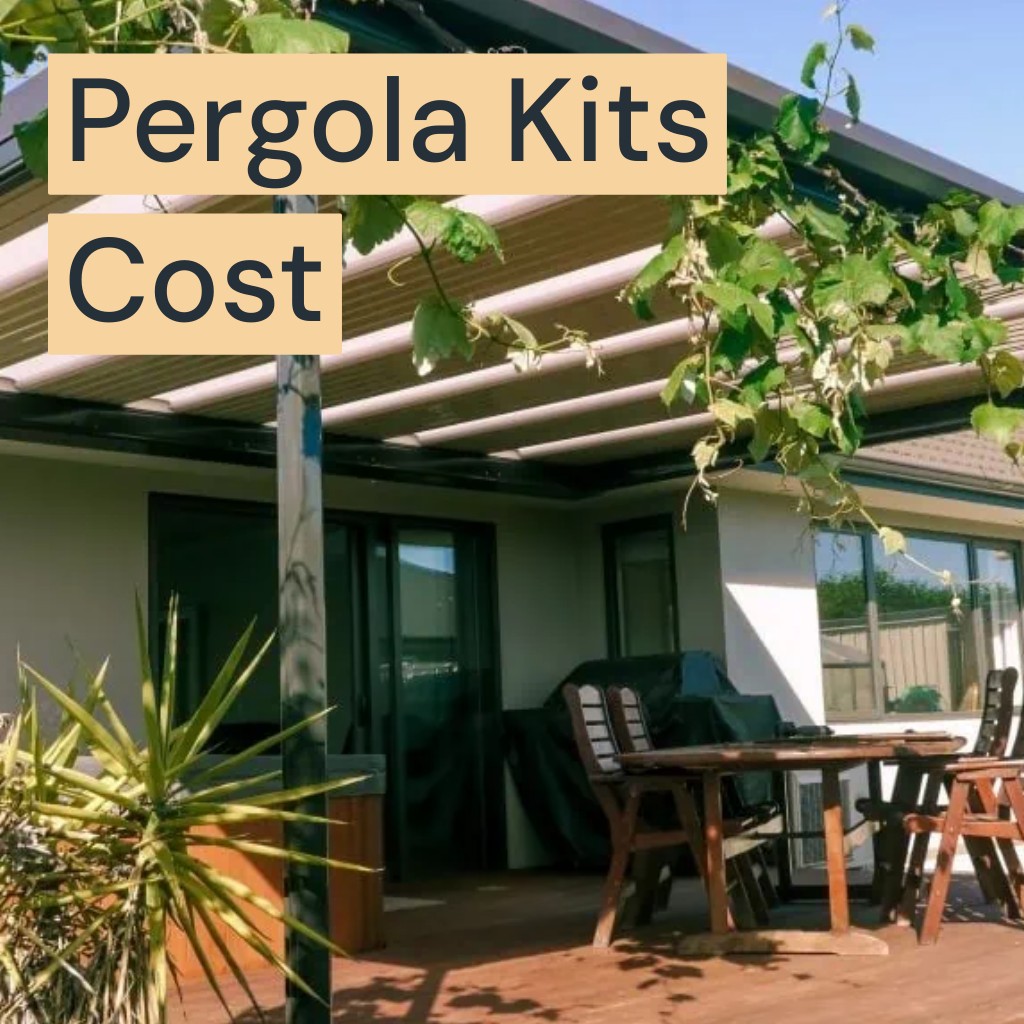
Material Costs: Steel vs Timber Pergola
When deciding on materials for building a pergola in Sydney, the choice between steel and timber is crucial because it affects both the initial cost and the ongoing expenses. Here’s what you need to consider:
- Longevity: Steel is known for its endurance and ability to withstand pest damage, which can mean less money spent on replacements in the future.
- Upkeep: While timber can bring a cozy look to your backyard, it needs more care, including regular treatments to maintain its condition.
- Installation: The heaviness of steel might raise the price of installation due to the need for extra labor, but timber is typically easier and cheaper to handle and install.
- Price Changes: The costs of steel and timber can shift based on the economy, which can affect how much you pay when you build.
Choosing the material that best suits your needs and budget can help ensure your pergola is a lasting investment rather than a source of ongoing expense.
Labor cost
Labor costs for constructing a pergola in Sydney can vary significantly based on several key factors.
Firstly, the complexity of the design is a major determinant. A straightforward, simple pergola may require less specialized labor, reducing costs. Conversely, a complex design with intricate features or the use of premium materials might necessitate skilled artisans, which can increase the labor expenses.
Secondly, the experience of the builders also plays a crucial role. Seasoned professionals may charge more for their expertise, but they can often work more efficiently and provide higher-quality results. Hiring experienced builders may be more cost-effective in the long run.
Lastly, the time frame for completion can impact labor costs. A project demanding a rapid turnaround could incur additional costs due to the need for more workers or overtime hours to meet the deadline.
Considering these variables is essential for homeowners when budgeting for their pergola project.
Design Complexity and Custom Elements
Design complexity and personalized details can significantly impact the cost of building a pergola in Sydney. For those looking to create a beautiful outdoor area, it’s important to understand that more complex and custom designs will generally be more expensive than simpler ones.
A straightforward structure is more cost-effective compared to one with detailed designs and made-to-order features, such as:
- Detailed lattice work and standout patterns that require skilled craftsmanship.
- Customized roofing that not only offers protection but also adds a distinctive aesthetic appeal.
- Made-to-order columns that give your pergola a touch of elegance and uniqueness.
- Personal touches and decorations that make a basic pergola into a peaceful getaway or a lively area for gatherings.
Each personalized addition not only builds a deeper personal connection with the space but also adds to the overall expense.
Deck and Roof Choices: Flat Roof, Gabled Roof, and Patio
When you’re building a pergola in Sydney, choosing the right deck and roof design is key for both the look and the cost.
Options like a simple flat roof, a classic gabled roof, or adding a cover over your patio can change how complex and expensive your project is.
Think about whether you want extras like lights, weatherproofing, gutters, or special flooring.
These can make your pergola more functional and stylish, but they’ll also add to the final price.
Additional Features: Lighting, Waterproofing, Guttering, and Paving
- Soft Lighting: Soft lighting can turn an ordinary evening into a cozy get-together.
- Reliable Waterproofing: Keep your outdoor space dry regardless of the weather.
- Efficient Guttering: A good guttering system can manage rain and sun quietly and efficiently.
- Quality Paving: Choose paving that adds aesthetic appeal to your outdoor area.
Including these features can provide comfort and increase the value of your property. For instance, quality paving not only looks good but also makes your outdoor space more usable year-round. Reliable waterproofing extends the life of your pergola by protecting it from rain damage. Efficient guttering prevents water from pooling and causing structural issues. And soft lighting creates a welcoming atmosphere for evening activities.
When planning your pergola, consider these enhancements to make the most of your outdoor living space.
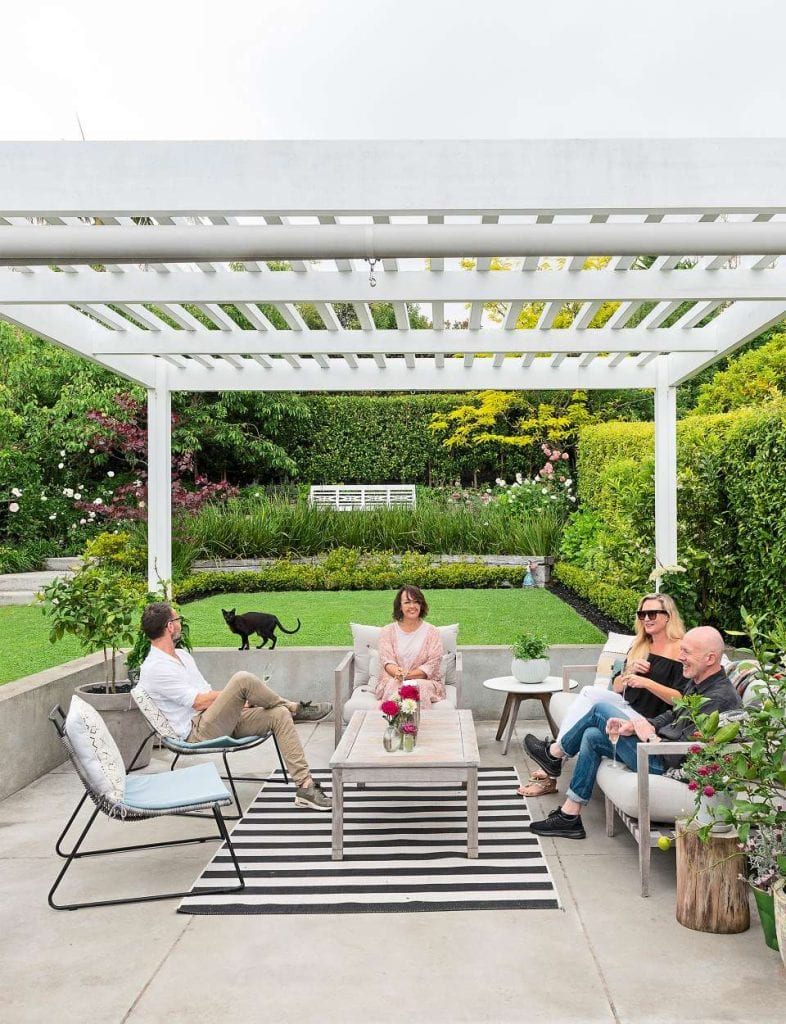
Different price ranges for pergola kits
In Sydney, the cost of pergola kits can vary widely. This difference in price is due to the variety of designs, sizes, and materials available.
The type of material you choose has a big impact on the price you’ll pay. Also, don’t forget to consider the cost of installing your pergola. This will add to your total spending on the project.
Ready-to-Install Pergola Kits Cost
If you’re shopping for a pergola kit in Sydney, you’ll find a range of options priced from $500 for the simplest setups to upwards of $5,000 for the most elaborate ones. These kits are made to fit various tastes and budgets, so you’re likely to find one that suits your needs for upgrading your outdoor area.
Here’s what you might expect at different price points:
- $500 – $1,000: Enjoy the thrill of getting a good deal and the satisfaction that comes with assembling your own pergola.
- $1,500 – $2,500: Feel proud to have an attractive and affordable addition to your garden.
- $3,000 – $4,000: Experience the contentment of owning an elegant pergola that might make your neighbors wish they had one too.
- $5,000 and above: Indulge in the luxury of a custom-designed refuge in your backyard.
Selecting the ideal pergola kit could turn your backyard into a welcoming spot for relaxation and social gatherings.
When planning for a pergola, keep in mind that its size, any extra features like retractable shades, and the need for preparing the site will all influence the overall cost. It’s wise to get a range of quotes from professional installers. This way, you can compare prices and understand exactly what you’re getting, including any guarantees and support after the installation.

Materials used in Pergola Kits
When you’re shopping for a pergola kit in Sydney, the material you select is key to determining how much you’ll spend. You have a range of choices from more budget-friendly options like pressure-treated wood to the pricier aluminium and composite materials. It’s wise to weigh up the look you’re going for, how long you want it to last, and how much you’re willing to spend.
Take a look at the usual materials and their unique qualities:
- Pressure-Treated Wood: This is a favorite for those who love classic styles. It brings a cozy and authentic touch to your backyard.
- Cedar: This wood is for anyone looking to add a touch of natural beauty to their outdoor space. Its deep color and pleasant aroma can make your garden feel more inviting.
- Vinyl: If you’re after a sleek, modern vibe and hate the thought of constant upkeep, vinyl is your go-to. It’s easy to keep looking good as new.
- Aluminium and Composites: These materials are for the forward-thinkers who value durability and a modern aesthetic. They offer a clean, contemporary feel that’s built to last.
Choosing the right material for your pergola will affect not only the cost but also the maintenance and how well it fits with your home’s style. Each option has its benefits, so think about what matters most to you in your outdoor space.
Why the Construction Costs may Increase in 2024
The cost of building pergolas in Sydney is expected to climb in 2024 due to rising labor and material costs. The demand for skilled workers in construction is going up, partly because the economy is recovering from the pandemic. This means that companies must offer higher wages to attract the workers they need, which in turn pushes up construction costs. Training new employees is also expensive and adds to these costs.
As for materials, prices are likely to go up. Ongoing issues with supply chains are making it difficult to get materials on time and at a reasonable cost. Also, the prices for raw materials like wood, steel, and aluminum may rise due to inflation and growing demand around the world.
Changes in government regulations and building codes may require better materials or more intricate designs for pergolas, which could increase the expenses further. Homeowners and builders should plan for these possible rises in costs by setting aside extra money when budgeting for projects in 2024.
Choosing the Best Time for Building a Pergola
When you’re thinking about adding a pergola to your property in Sydney, timing is everything. Not only does it provide a functional outdoor area, but it also becomes a place rich with personal value, where you’ll make lasting memories. To match your plans with your vision, here’s what to consider:
- Spring: Building your pergola in spring, from September to November, is a smart move. The mild weather is great for construction, and your new pergola will be ready just as your garden starts to show its full splendor.
- Summer: Get your pergola up by early December, and you’ll have the perfect spot for festive gatherings and ringing in the New Year outdoors with friends and family.
- Autumn: The cooler temperatures from March to May make this a comfortable time for construction. Plus, you’ll get to enjoy your pergola with a backdrop of beautiful autumn leaves.
- Winter: Opting for a winter build, between June and August, can mean less waiting time and potentially better pricing. Plus, your pergola will be set for you to enjoy as soon as spring arrives.
To decide on the best time for your pergola project in Sydney, weigh up the weather, builder availability, and what you hope to get out of your new outdoor space. Pick a time that offers good conditions, reliable builders, and aligns with your personal expectations.
Securing a Fair Quote: Contractor’s and Builder’s Quotes
When you’re looking for a fair price on building a pergola in Sydney, it’s vital to get several quotes from different contractors and builders. This helps you understand the standard rates and what you should expect to pay. It also offers a chance to see the range of services provided.
Each quote should clearly list all costs involved, from materials and labor to permits and any extra charges. This transparency ensures you know exactly what you’re paying for and helps avoid surprises down the line.
It’s wise to research the professionals you’re considering—read customer reviews, examine their past projects, and ask for references to check their track record and the quality they deliver.
Feel free to discuss the quote with the professional and negotiate if you think certain aspects can be adjusted. A fair price means getting good quality work without overpaying, not just finding the cheapest offer.
Remember, securing a fair quote is about balancing cost with the confidence that you’ll receive a well-constructed pergola from a dependable builder or contractor.
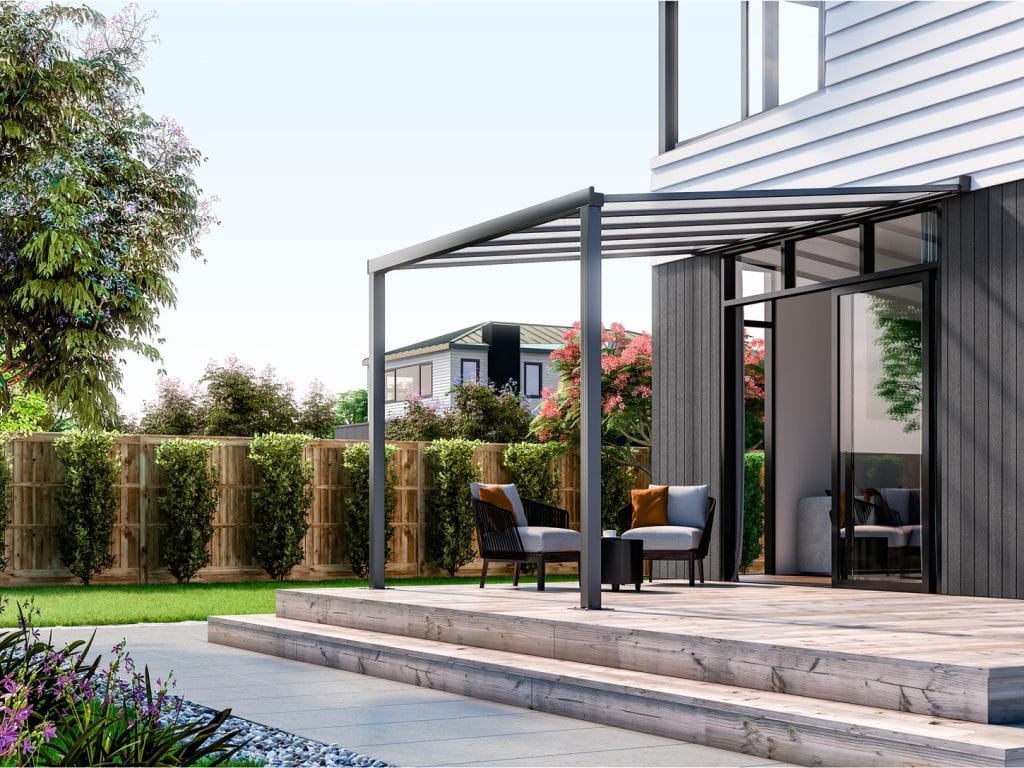
Future of Pergolas: Design Trends and Associated Costs
In Sydney, the way pergolas are built is changing, with new materials and smart technology changing how much they cost. People who own homes and those who design them are always looking for ways to make these outdoor spaces both good to look at and practical, to improve everyday living and show off modern design.
Here are some key factors affecting the cost of building a pergola today:
- Automated Pergolas: These come with systems that adjust lighting and shade and respond to weather changes, making outdoor living more comfortable and convenient.
- Sustainable Materials: There’s a trend towards using materials that are kind to the environment and easy to look after, which can save money over time.
- Bespoke Designs: People want pergolas that show off their personal style, leading to custom-built designs that turn these structures into personal retreats.
- Natural Features: Adding elements like living plants and vertical gardens to pergolas creates a peaceful space and connects people with nature.
Each of these trends not only impacts the cost but also adds value to a home and improves the quality of life for those using the space. Investing in a pergola in Sydney is becoming more about investing in the future of your home and your own well-being.
Conclusion
The cost to build a pergola in Sydney can vary greatly. Factors such as materials chosen, the design’s complexity, size of the structure, and the cost of labor all play a part in the final price.
There are pergola kits available which offer a range of prices for different budgets. It’s worth noting that construction costs may rise in 2024, so planning and budgeting with this in mind is wise.
Getting multiple quotes can help ensure you find a good deal. Also, keeping an eye on the latest design trends could influence the cost of building a pergola down the line.
Frequently Asked Questions
Q: What types of pergolas are typically more expensive to build?
A: Custom pergolas that require specific design and style, use premium materials, or are larger in size tend to be more expensive. Furthermore, pergolas attached to the house may have additional costs due to increased labor and materials needed for a safe and secure installation.
Q: Are there additional costs to consider when thinking of installing a pergola?
A: Yes, additional factors can add to the cost of building a pergola. This can include the cost of the site preparation, any necessary permits, electrical or plumbing work if necessary, and the installation cost if you’re hiring professionals to build it.
Q: How can I estimate the average cost of my pergola project?
A: You can use a cost guide to start estimating pergola costs. However, for a more precise estimate it’s best to consult with a local pergola builder. They can provide a detailed quote based on your specific needs and preferences, and the conditions of your outdoor area.
Q: Can I save money by building the pergola myself?
A: While a DIY pergola can save on labour costs, it’s important to note that building a pergola does require a certain level of skill and knowledge. Procuring the materials yourself and making sure you have the proper tools can also be a significant factor in your budget. If you’re not comfortable with construction, it may be more cost-effective to hire a professional to avoid costly mistakes.
Q: How does the cost of a pergola in Sydney 2024 compare to 2023?
A: With material costs and labour rates potentially rising each year, it could be expected that the cost of building a pergola in Sydney 2024 may be higher than in 2023. However, other factors such as market competition and innovation in building processes and materials could also affect the price.
Q: Does the choice of roof for my pergola affect the cost?
A: Yes, the type of roof you choose for your pergola may greatly affect the cost. Common choices include polycarbonate or colorbond roofing, shade cloth, retractable awning or even a green roof. Each one has different costs associated with it, and it can greatly influence your pergola design and the overall cost.
Q: Can a pergola add value to my property in Sydney?
A: An aesthetically pleasing and well-constructed pergola can greatly improve the aesthetic quality of an outdoor area, and provide additional living space, which may increase the overall value of your Sydney property.
Q: What costs are involved if I want to build a deck as well as a pergola?
A: Building a deck along with a pergola will add to the overall costs. Material selection, the size of the deck, and labour are the primary cost factors. Decking costs can vary significantly based on the type of timber you choose; mid-range choices such as merbau or spotted gum could cost around $100 – $200 per square metre including installation.
